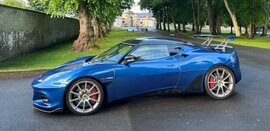KERS is back for 2011 after a two-year absence. But what has changed since 2009 and what
can we expect from KERS in 2011?
Having disappeared for 2010, KERS makes a return for 2011. In fact, it never actually
disappeared from the regulations, but an agreement between the teams meant it was put on
hold for a year. Now it's back as a cost-effective hybrid power tool, picking up where the sport
left off at the end of 2009.
Why is KERS back?
If it was deemed unnecessary for 2010, why are teams so keen to run it in 2011? Well, things
have changed quite a lot in the last year and it's now been demonstrated that KERS can be
reintroduced to the cars at an acceptable cost level. Equally, as a technology that has great
relevance to the development of hybrid and electric road cars, it makes sense for Formula 1
to continue pioneering the development of such technology by making them lighter and more
efficient.
Will KERS be the same as in 2009?
The technical regulations limit KERS by the size of the electric motor and the amount of time
it can run in any given lap. Those limits remain exactly the same as those defined in 2009.
KERS should not deliver power in excess of 60kW, which is equivalent to around 80
horsepower, when the driver presses a button on the steering wheel. He cannot use more
than 400kJ per lap, which equates to about seven seconds worth of use.
How different will Lotus Renault GP's KERS be compared to the 2009 version?
Although the basis of the 2011 system comes from 2009, it has been completely reengineered
to ensure a much more competitive device. So every aspect has been optimised,
including its integration with the vehicle. That has meant removing weight and significant
repackaging to ensure it can be easily installed and removed from the car. This year's system
represents a weight saving of more than 10kg compared to 2009.
Will all teams use KERS in 2011?
In 2009 running with KERS was always a compromise because the additional weight meant
precious ballast had to be removed from the car. The knock-on effect made it harder for
drivers to optimise car balance, especially the heavier drivers who could run with the least
ballast of all. As a result, many teams preferred not to use KERS. To solve these issues, the
minimum weight of the cars has been increased from 620kg to 640kg – a move that should
encourage most teams to run with KERS since the trade-off between extra weight and extra
horsepower has been significantly reduced.
Why don't the regulations allow KERS to provide bigger gains in 2011?
In order for KERS to be reintroduced at a moderate cost level for 2011, there was little choice
but to base it on the 2009 systems, which also meant inheriting the energy and power
requirements of those systems. Also, with new engine regulations on the horizon for 2013, it
makes sense for any significant KERS developments to coincide with the introduction of new
engines.
Will cars with KERS have a clear performance advantage in 2011?
The short answer is 'yes' and there are several factors that make KERS more relevant in
2011 than it was in 2009. Firstly, the ban on refuelling has made it much more difficult to gain
positions using pit strategy, which places a higher premium on qualifying performance. And
it's during qualifying that the gains from KERS are greatest because cars can run with fully
charged systems and get the maximum benefit on a flying lap. Then, at the start of the race
(the best opportunity to gain positions), KERS offers another significant performance gain of
10 to 20 metres by the braking point for the first corner. While it comes with penalties in terms
of complexity and packaging constraints, these headline gains are difficult to ignore.
What about the safety implications of KERS?
There is a lot of energy stored in the KERS battery, which is at voltages that could cause
severe injury if not handled responsibly. The fundamental safety guidelines established in
2009 by the KERS Safety Working Group remain valid, but Lotus Renault GP has also
revaluated its internal safety procedures and retrained all staff to ensure optimum safety.










Recommended Comments
There are no comments to display.
Join the conversation
You can post now and register later. If you have an account, sign in now to post with your account.